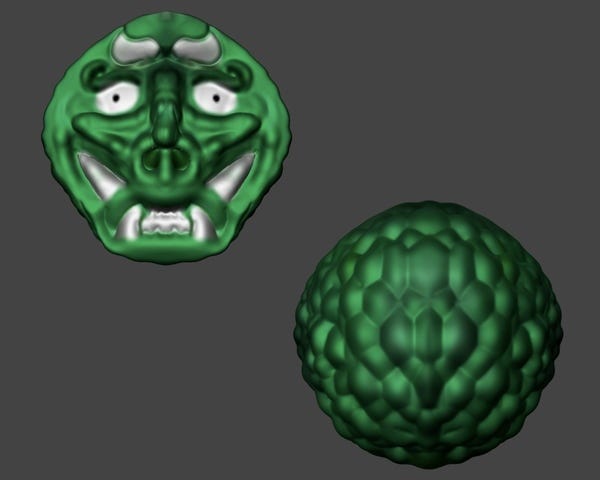Netsuke: Miniature Japanese sculpture, approximately 3.8cm (1.5in) in size. Used as a counterweight to suspend pouches from the kimono‘s sash.
The Netsuke is a perfect example of utility art. What started with simple pieces of wood and stone evolved into a craft and artistic expression, for both the sculptor and those who chose to display them.
Netsuke art as a medium began in the 16th century, replacing polished rocks and calcified wood with ivory, lacquer, porcelain, or metal, often depicting history, fables, animals, mystical creatures, masks, religious figures, and people engaged in all forms of activity.
Netsuke remained in vogue and the business flourished until about 1926 when western apparel styles were more widely adopted. Now no longer worn, they have been retired as a utility and can be strictly appreciated as art.
During Tokugawa and Meiji periods (1603-1912) netsuke became a part of everyday life in Japan. The netsuke was never intended to be worn alone but rather with others in a collection. A netsuke holder would be able to depict stories with the ornamental figurines adorning their purse, or sagemono, a pouch connected to the sash ( obi ) by means of a cord.
The netsuke as a utility can be found all over the world, wherever a sash was a prominent aspect of their garb. But only in Japan did it develop into an artistic medium. Netsuke does not have a translation in other languages and is therefore referred to universally as 'netsuke.’
For a little more than 300 years, sculptors worked under the guidelines the utility required. A netsuke must be small in nature and sound enough to support weight and constant motion. It must be smooth and rounded so as not to catch fabric or be broken off.
Yet netsuke thrived in spite of strict requirements. Sculptors were free to work in a bull market, as netsuke were in high demand. The pieces can be simple and mass-produced and would still find themselves connected to wallets.
From the netsuke start, utility remained the same, art and medium improved over time. Every technique employed from etching, carving, and shaping to smoothing, rounding, and polishing brought forth the smallest details to more obvious, vague forms. But a netsuke develops through a labor of love. It is not without aji, smoothness, and shine brought on by years of handling and wear, that a netsuke is complete.
NFTs vs Netsuke: I assume I lost more than 50% of my readers by mentioning NFTs again.
Netsuke is a condemnation of NFTs. The exact opposite. Now I lost the rest of my readers, so I suppose what follows is just for me.
The utility comes first. When asking yourself as an NFT artist ‘am I going to make it big?’ Don’t expect an answer.
If you want to focus on 1/1 art you need to find the customer where they sleep and hock your wares. For netsuke artists, their customers found them where they sleep. By proxy of utility which brought the popularity of the medium.
By virtue of art, netsuke and NFTs have similarities. Both are used to adorn wallets. But with clubs and DAOs popping up (poppingupdao.eth) utility goes beyond decoration.
Investors are looking for fungible returns on their non-fungible investments. Payout expectations rise with every new collection launched. Can the hype that surrounds NFT investments last 300 years when the utility is not clear? Can the utility be as simple as being part of a collective or does it need a real-world application to be widely adopted?
My NFT project Notsuke are 1/1 3D sculptures that offer no purpose will be used as netsuke in the metaverse.
Now accepting applications for PoppingUpDAO.eth and Notsuke Metaverse Products


